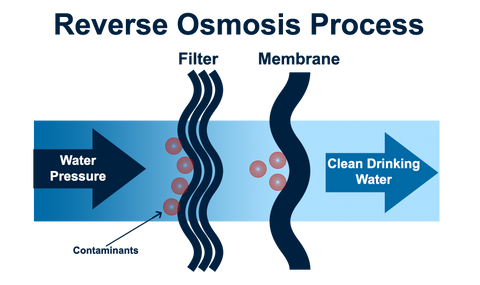 The Reverse Osmosis Filtering Process
The Reverse Osmosis Filtering Process
Getting clean and safe drinking water is important and depending on where you live, clean drinking water could be hard to come by. In order to get safe, clean, pure water you may need a water filtering system. There are different options for filtering your water, but one of the most cost effective and efficient ways is with reverse osmosis.
Reverse osmosis pushes water straight from the tap through a reverse osmosis membrane and filter system in order to remove the impurities and get clean drinking water. An RO membrane contains tightly wound, very small porous filter material, to help clean out the larger water contaminants. As the water pressure pushes the unfiltered water, it forces the water molecules through the membrane's filter screen and the water leaves behind any non-water molecules, like salt, chemicals, and debris.
There are smaller drinking water systems available to help filter water in your kitchen, there are huge commercial water systems that filter thousands of gallons of water per day, and there are whole home reverse osmosis water systems that filter an entire house's water supply, making sure there's safe water available no matter where you may live.

